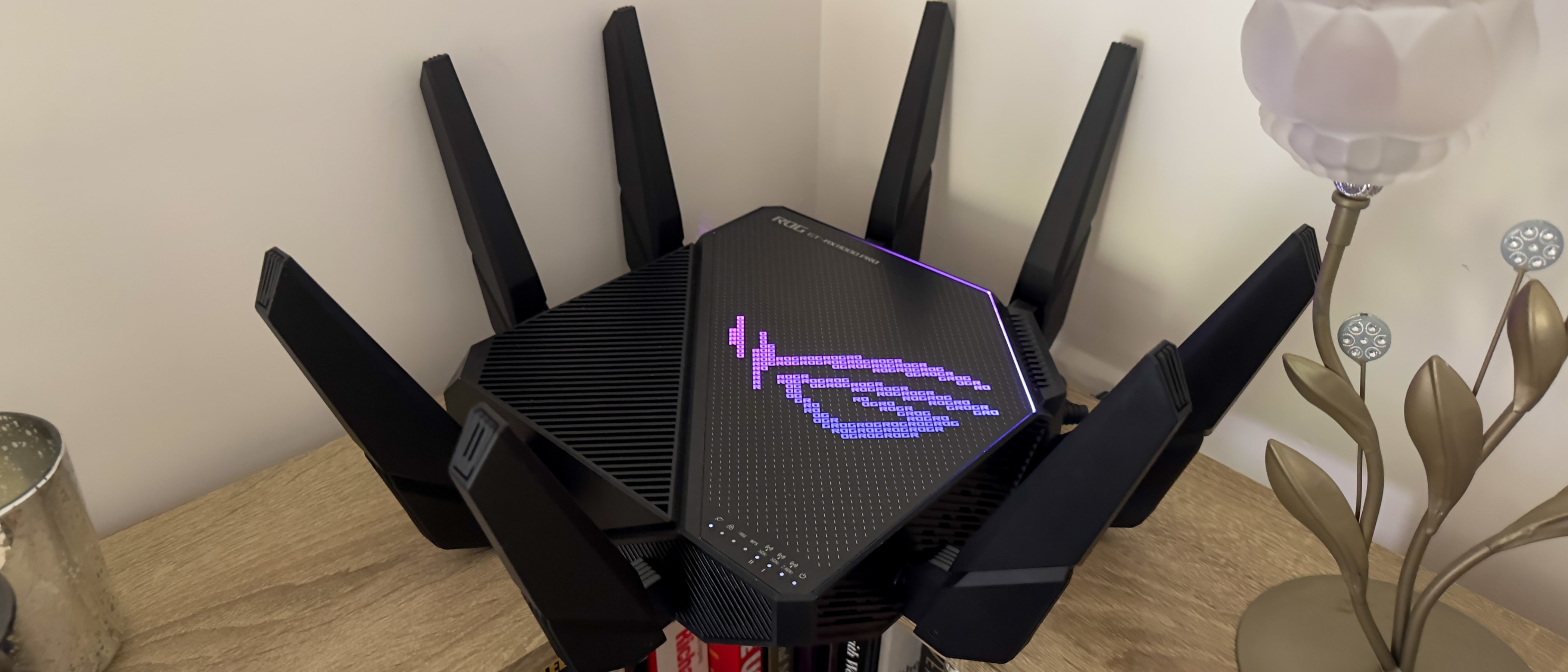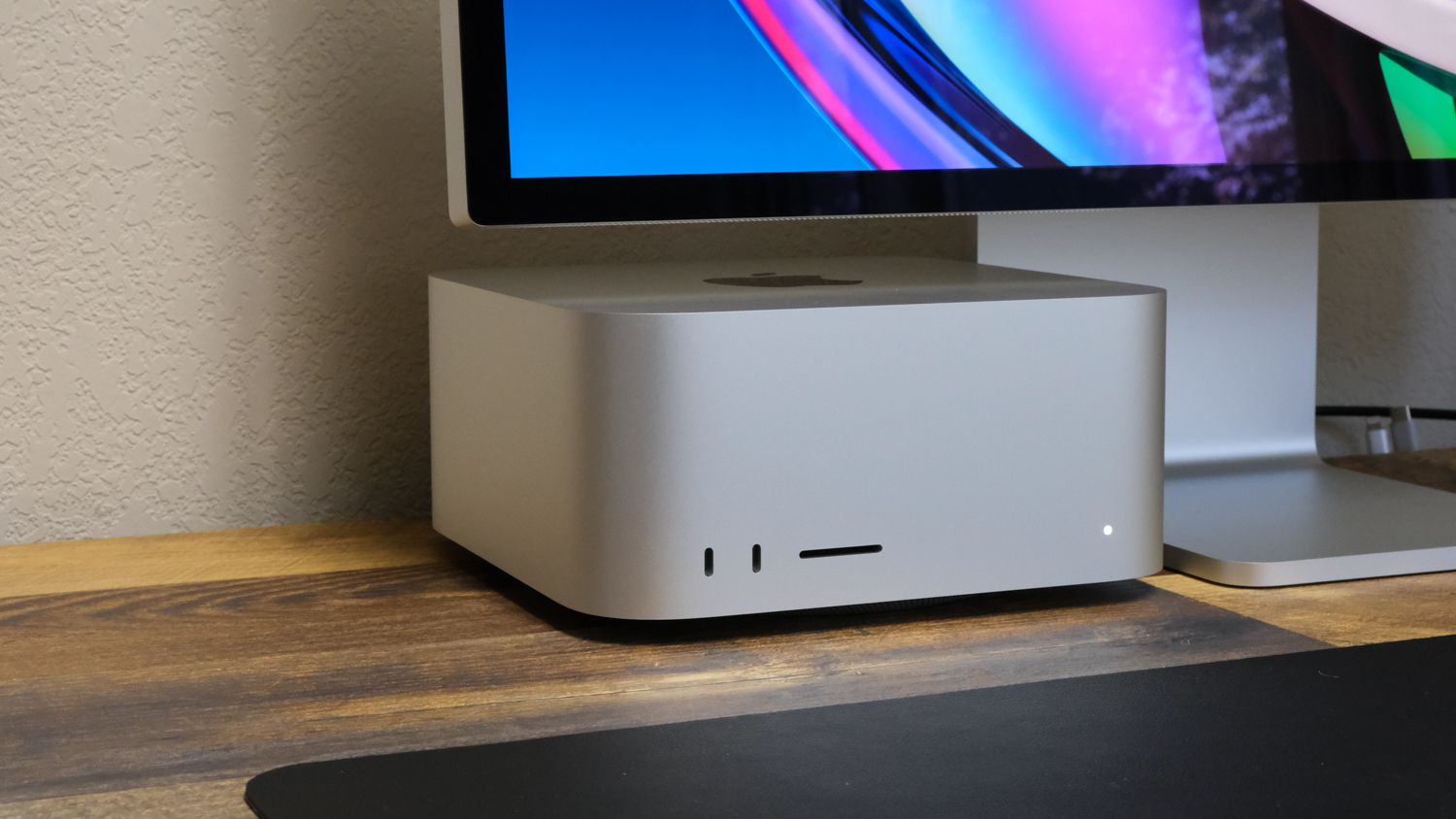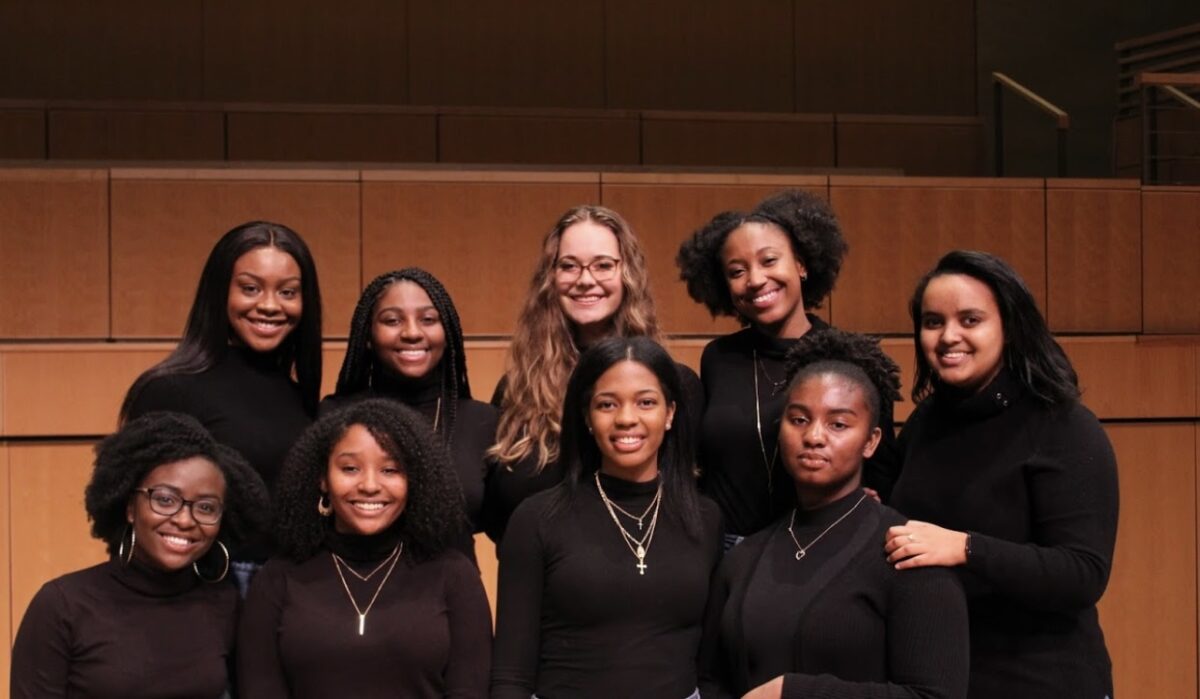Attendance at IEEE’s STEM Summer Camp Breaks Records
In
our pilot study, we draped a skinny, flexible electrode array over the surface area of the volunteer’s brain. The electrodes recorded neural alerts and despatched them to a speech decoder, which translated the signals into the text the male meant to say. It was the initially time a paralyzed person who could not speak had used neurotechnology to broadcast total words—not just letters—from the brain.
That demo was the culmination of far more than a ten years of analysis on the underlying mind mechanisms that govern speech, and we’re enormously happy of what we have achieved so far. But we’re just having commenced.
My lab at UCSF is operating with colleagues close to the entire world to make this engineering harmless, stable, and dependable ample for day to day use at house. We’re also operating to enhance the system’s general performance so it will be well worth the work.
How neuroprosthetics operate
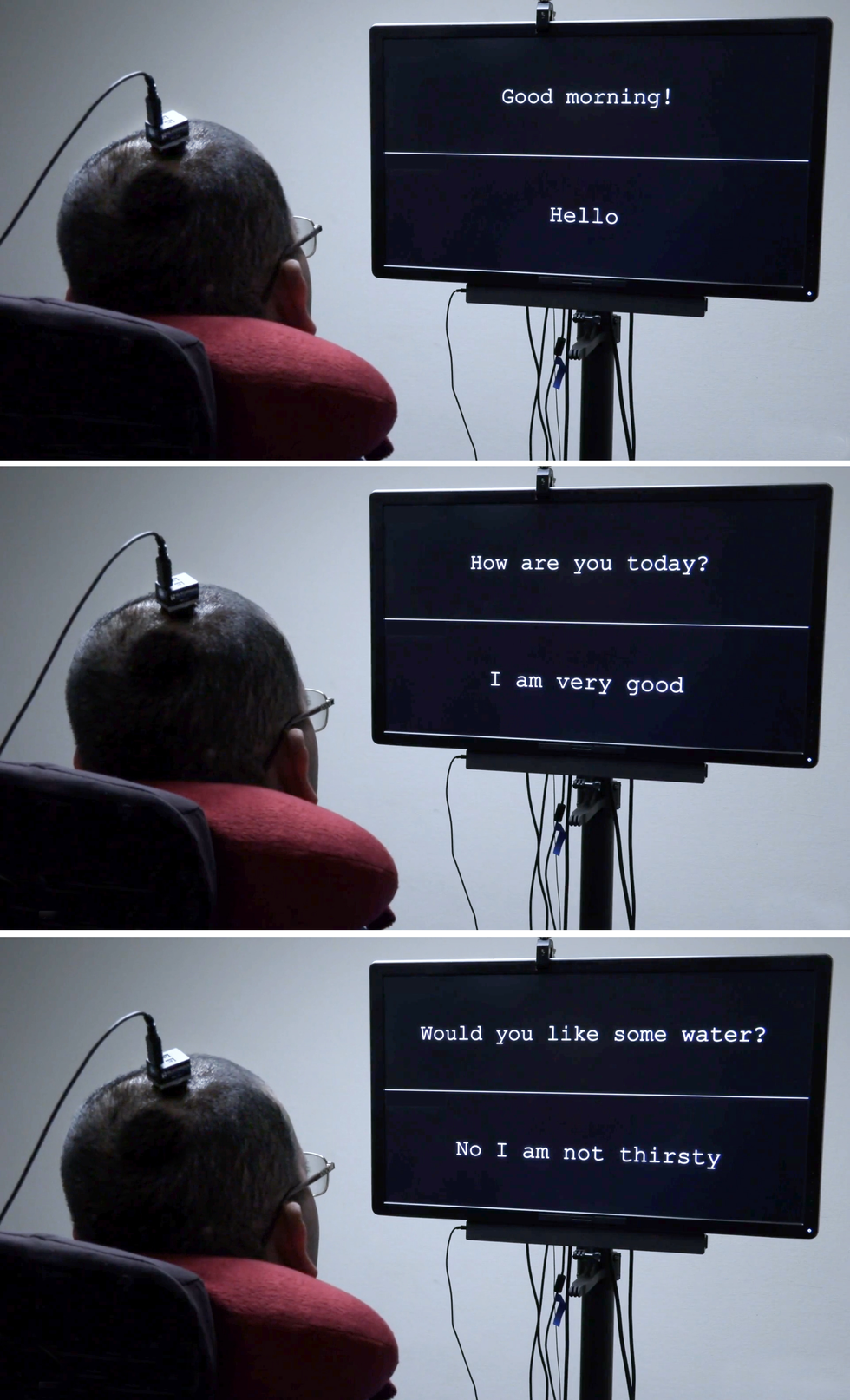 The 1st model of the mind-personal computer interface gave the volunteer a vocabulary of 50 sensible text. College of California, San Francisco
The 1st model of the mind-personal computer interface gave the volunteer a vocabulary of 50 sensible text. College of California, San Francisco
Neuroprosthetics have occur a very long way in the past two decades. Prosthetic implants for listening to have advanced the furthest, with patterns that interface with the
cochlear nerve of the internal ear or straight into the auditory brain stem. There is also substantial exploration on retinal and mind implants for eyesight, as very well as attempts to give folks with prosthetic palms a sense of touch. All of these sensory prosthetics choose info from the outside globe and convert it into electrical alerts that feed into the brain’s processing centers.
The reverse form of neuroprosthetic records the electrical activity of the mind and converts it into signals that control anything in the exterior globe, these types of as a
robotic arm, a movie-match controller, or a cursor on a computer monitor. That last command modality has been applied by groups these types of as the BrainGate consortium to help paralyzed persons to form words—sometimes a person letter at a time, occasionally utilizing an autocomplete function to velocity up the procedure.
For that typing-by-mind function, an implant is typically placed in the motor cortex, the element of the brain that controls movement. Then the consumer imagines selected actual physical steps to regulate a cursor that moves more than a virtual keyboard. Yet another method, pioneered by some of my collaborators in a
2021 paper, experienced a person person consider that he was holding a pen to paper and was writing letters, generating alerts in the motor cortex that had been translated into text. That strategy established a new document for velocity, enabling the volunteer to publish about 18 words and phrases per minute.
In my lab’s analysis, we’ve taken a much more ambitious solution. Rather of decoding a user’s intent to shift a cursor or a pen, we decode the intent to control the vocal tract, comprising dozens of muscle groups governing the larynx (generally referred to as the voice box), the tongue, and the lips.
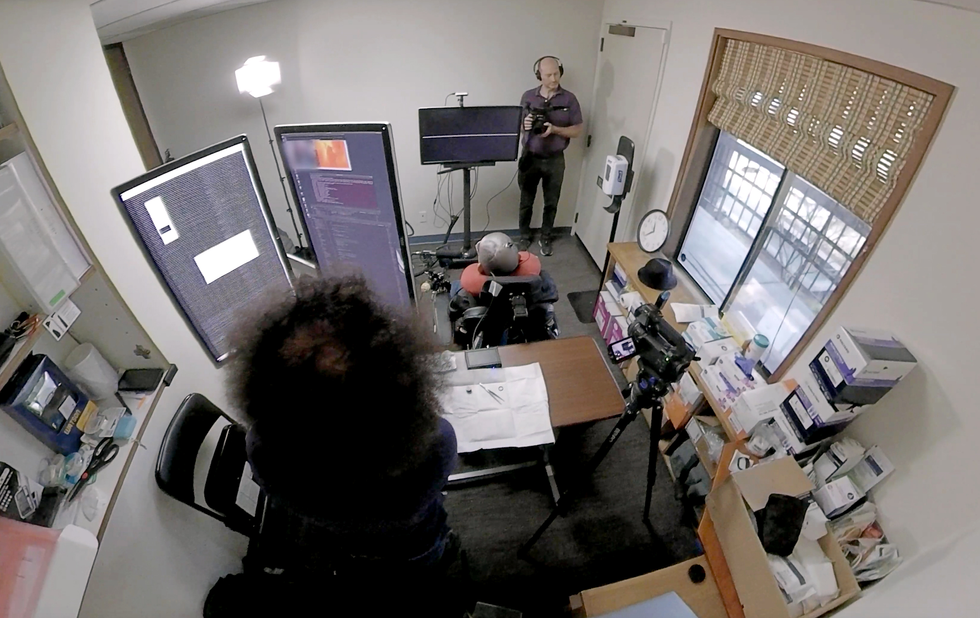 The seemingly easy conversational set up for the paralyzed gentleman [in pink shirt] is enabled by the two sophisticated neurotech hardware and device-discovering systems that decode his brain signals. College of California, San Francisco
The seemingly easy conversational set up for the paralyzed gentleman [in pink shirt] is enabled by the two sophisticated neurotech hardware and device-discovering systems that decode his brain signals. College of California, San Francisco
I started doing work in this space more than 10 yrs ago. As a neurosurgeon, I would often see people with significant accidents that remaining them unable to discuss. To my shock, in lots of situations the spots of brain injuries did not match up with the syndromes I discovered about in clinical college, and I recognized that we continue to have a large amount to discover about how language is processed in the mind. I resolved to examine the underlying neurobiology of language and, if achievable, to build a brain-machine interface (BMI) to restore conversation for persons who have lost it. In addition to my neurosurgical history, my staff has expertise in linguistics, electrical engineering, laptop science, bioengineering, and medication. Our ongoing scientific demo is screening each components and software program to investigate the limits of our BMI and identify what variety of speech we can restore to folks.
The muscle mass concerned in speech
Speech is a single of the behaviors that
sets individuals apart. Loads of other species vocalize, but only individuals combine a established of seems in myriad various methods to depict the environment all-around them. It is also an terribly complex motor act—some specialists believe it is the most sophisticated motor motion that individuals accomplish. Speaking is a product or service of modulated air circulation through the vocal tract with every utterance we form the breath by creating audible vibrations in our laryngeal vocal folds and switching the shape of the lips, jaw, and tongue.
A lot of of the muscle groups of the vocal tract are fairly unlike the joint-centered muscle groups this kind of as all those in the arms and legs, which can transfer in only a couple approved techniques. For illustration, the muscle mass that controls the lips is a sphincter, whilst the muscle tissue that make up the tongue are governed extra by hydraulics—the tongue is largely composed of a fastened volume of muscular tissue, so shifting one particular component of the tongue alterations its shape in other places. The physics governing the actions of this kind of muscular tissues is thoroughly different from that of the biceps or hamstrings.
Mainly because there are so a lot of muscles involved and they every single have so quite a few levels of liberty, there is primarily an infinite quantity of doable configurations. But when people today speak, it turns out they use a comparatively little established of core movements (which differ considerably in various languages). For example, when English speakers make the “d” sound, they set their tongues at the rear of their teeth when they make the “k” seem, the backs of their tongues go up to touch the ceiling of the again of the mouth. Few folks are aware of the specific, advanced, and coordinated muscle mass steps necessary to say the simplest phrase.
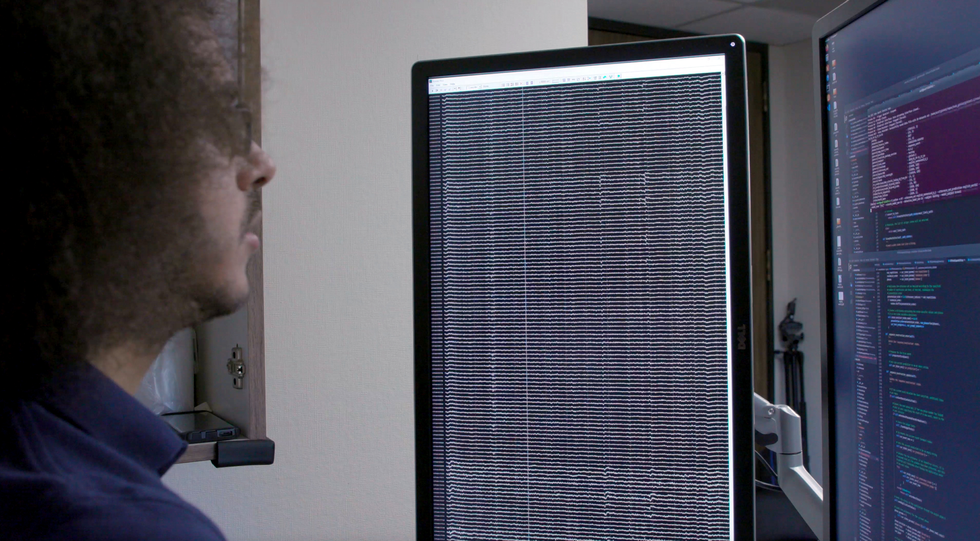 Group member David Moses appears to be at a readout of the patient’s brain waves [left screen] and a show of the decoding system’s action [right screen].University of California, San Francisco
Group member David Moses appears to be at a readout of the patient’s brain waves [left screen] and a show of the decoding system’s action [right screen].University of California, San Francisco
My study group focuses on the parts of the brain’s motor cortex that ship motion commands to the muscle tissues of the experience, throat, mouth, and tongue. People brain areas are multitaskers: They control muscle mass actions that produce speech and also the movements of all those identical muscular tissues for swallowing, smiling, and kissing.
Learning the neural action of individuals locations in a valuable way necessitates both of those spatial resolution on the scale of millimeters and temporal resolution on the scale of milliseconds. Historically, noninvasive imaging methods have been ready to provide one particular or the other, but not both equally. When we begun this investigate, we uncovered remarkably little knowledge on how brain exercise patterns were being related with even the simplest factors of speech: phonemes and syllables.
Below we owe a credit card debt of gratitude to our volunteers. At the UCSF epilepsy middle, patients getting ready for surgical procedures ordinarily have electrodes surgically positioned above the surfaces of their brains for a number of days so we can map the areas concerned when they have seizures. In the course of individuals number of days of wired-up downtime, lots of patients volunteer for neurological analysis experiments that make use of the electrode recordings from their brains. My group questioned people to allow us research their styles of neural exercise whilst they spoke words.
The hardware included is known as
electrocorticography (ECoG). The electrodes in an ECoG technique do not penetrate the mind but lie on the surface of it. Our arrays can contain many hundred electrode sensors, just about every of which records from 1000’s of neurons. So significantly, we’ve made use of an array with 256 channels. Our goal in those people early research was to discover the styles of cortical action when people speak uncomplicated syllables. We requested volunteers to say particular seems and words and phrases although we recorded their neural patterns and tracked the actions of their tongues and mouths. Often we did so by acquiring them wear colored experience paint and applying a laptop-vision procedure to extract the kinematic gestures other situations we made use of an ultrasound device positioned below the patients’ jaws to image their relocating tongues.
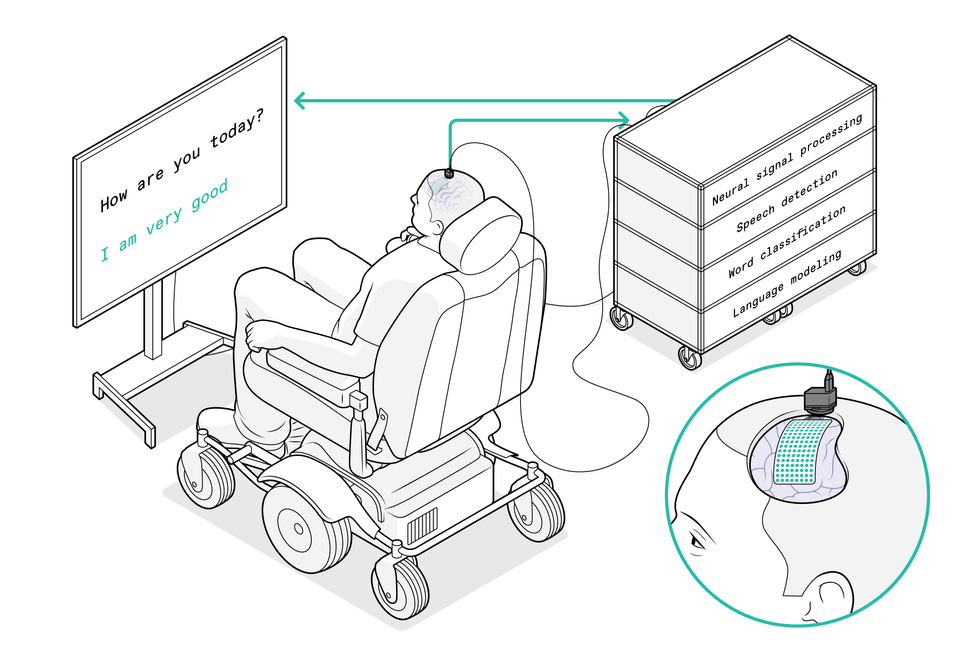 The program begins with a flexible electrode array that’s draped about the patient’s brain to select up indicators from the motor cortex. The array specifically captures movement instructions meant for the patient’s vocal tract. A port affixed to the skull guides the wires that go to the personal computer technique, which decodes the brain indicators and interprets them into the words and phrases that the affected person wishes to say. His responses then surface on the screen display screen.Chris Philpot
The program begins with a flexible electrode array that’s draped about the patient’s brain to select up indicators from the motor cortex. The array specifically captures movement instructions meant for the patient’s vocal tract. A port affixed to the skull guides the wires that go to the personal computer technique, which decodes the brain indicators and interprets them into the words and phrases that the affected person wishes to say. His responses then surface on the screen display screen.Chris Philpot
We used these methods to match neural styles to movements of the vocal tract. At initially we had a lot of inquiries about the neural code. A person likelihood was that neural exercise encoded instructions for distinct muscular tissues, and the mind fundamentally turned these muscle tissue on and off as if pressing keys on a keyboard. An additional notion was that the code decided the velocity of the muscle contractions. Nevertheless one more was that neural exercise corresponded with coordinated designs of muscle mass contractions made use of to deliver a particular audio. (For instance, to make the “aaah” seem, both equally the tongue and the jaw require to drop.) What we discovered was that there is a map of representations that controls distinct components of the vocal tract, and that with each other the distinct mind parts merge in a coordinated method to give increase to fluent speech.
The position of AI in today’s neurotech
Our function relies upon on the improvements in synthetic intelligence more than the earlier ten years. We can feed the information we gathered about both of those neural activity and the kinematics of speech into a neural community, then let the device-learning algorithm obtain styles in the associations concerning the two facts sets. It was achievable to make connections between neural action and made speech, and to use this product to produce laptop-created speech or textual content. But this method could not coach an algorithm for paralyzed people today simply because we’d absence half of the knowledge: We’d have the neural patterns, but practically nothing about the corresponding muscle mass movements.
The smarter way to use equipment studying, we understood, was to split the issue into two methods. Initially, the decoder interprets indicators from the brain into intended movements of muscles in the vocal tract, then it translates all those meant actions into synthesized speech or textual content.
We get in touch with this a biomimetic solution due to the fact it copies biology in the human overall body, neural activity is right accountable for the vocal tract’s movements and is only indirectly accountable for the appears manufactured. A large advantage of this strategy comes in the coaching of the decoder for that 2nd action of translating muscle mass movements into seems. Because all those relationships amongst vocal tract actions and sound are relatively common, we had been in a position to prepare the decoder on massive facts sets derived from people today who weren’t paralyzed.
A clinical trial to exam our speech neuroprosthetic
The subsequent major problem was to convey the engineering to the persons who could definitely reward from it.
The National Institutes of Overall health (NIH) is funding
our pilot trial, which started in 2021. We by now have two paralyzed volunteers with implanted ECoG arrays, and we hope to enroll much more in the coming yrs. The key aim is to improve their communication, and we’re measuring performance in conditions of words and phrases for every moment. An average adult typing on a comprehensive keyboard can form 40 words per minute, with the quickest typists reaching speeds of much more than 80 terms per moment.
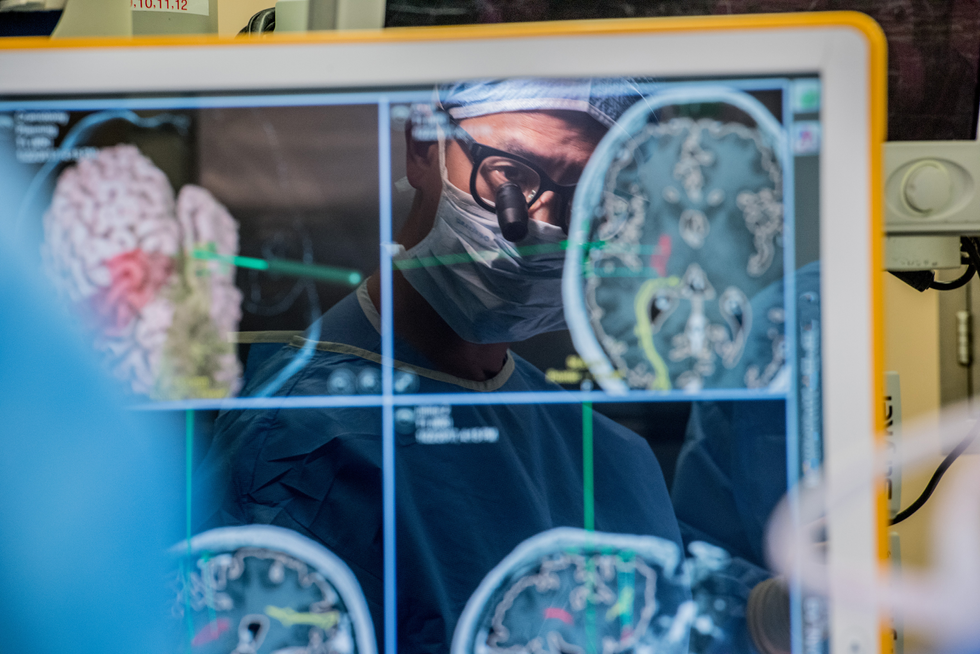 Edward Chang was influenced to build a mind-to-speech method by the individuals he encountered in his neurosurgery exercise. Barbara Ries
Edward Chang was influenced to build a mind-to-speech method by the individuals he encountered in his neurosurgery exercise. Barbara Ries
We imagine that tapping into the speech program can supply even much better final results. Human speech is considerably more quickly than typing: An English speaker can very easily say 150 words in a moment. We’d like to allow paralyzed people to connect at a price of 100 text for each minute. We have a ton of get the job done to do to arrive at that intention, but we assume our tactic tends to make it a feasible concentrate on.
The implant treatment is program. To start with the surgeon gets rid of a smaller part of the skull subsequent, the adaptable ECoG array is carefully positioned across the floor of the cortex. Then a modest port is fastened to the cranium bone and exits by means of a independent opening in the scalp. We at the moment want that port, which attaches to external wires to transmit data from the electrodes, but we hope to make the program wi-fi in the foreseeable future.
We’ve thought of employing penetrating microelectrodes, since they can record from scaled-down neural populations and may possibly as a result provide extra depth about neural activity. But the latest hardware is not as robust and safe as ECoG for scientific applications, primarily over numerous yrs.
One more consideration is that penetrating electrodes usually demand each day recalibration to flip the neural alerts into very clear instructions, and research on neural products has shown that velocity of set up and overall performance dependability are crucial to having people today to use the engineering. That is why we’ve prioritized steadiness in
generating a “plug and play” process for lengthy-term use. We carried out a research seeking at the variability of a volunteer’s neural indicators over time and uncovered that the decoder done much better if it employed knowledge styles throughout many sessions and a number of days. In equipment-mastering phrases, we say that the decoder’s “weights” carried more than, making consolidated neural signals.
https://www.youtube.com/observe?v=AfX-fH3A6BsUniversity of California, San Francisco
Since our paralyzed volunteers just cannot converse though we check out their brain styles, we asked our 1st volunteer to test two various methods. He began with a checklist of 50 terms that are handy for each day lifetime, these kinds of as “hungry,” “thirsty,” “please,” “help,” and “computer.” During 48 sessions in excess of numerous months, we at times requested him to just think about declaring every single of the words and phrases on the list, and sometimes asked him to overtly
test to say them. We discovered that tries to communicate produced clearer mind indicators and were enough to teach the decoding algorithm. Then the volunteer could use those phrases from the checklist to make sentences of his own deciding upon, such as “No I am not thirsty.”
We’re now pushing to broaden to a broader vocabulary. To make that get the job done, we need to continue to make improvements to the current algorithms and interfaces, but I am self-assured those people enhancements will happen in the coming months and years. Now that the proof of theory has been founded, the intention is optimization. We can concentration on earning our method faster, more precise, and—most important— safer and additional dependable. Matters should really move speedily now.
Most likely the most significant breakthroughs will appear if we can get a greater comprehension of the brain techniques we’re striving to decode, and how paralysis alters their exercise. We’ve come to comprehend that the neural designs of a paralyzed individual who can not deliver instructions to the muscles of their vocal tract are pretty different from individuals of an epilepsy affected individual who can. We’re making an attempt an formidable feat of BMI engineering though there is still heaps to find out about the fundamental neuroscience. We consider it will all appear with each other to give our people their voices again.
From Your Web site Content articles
Relevant Content articles All around the Web

